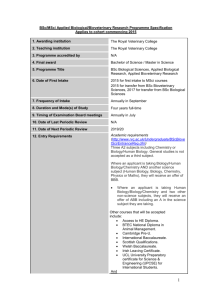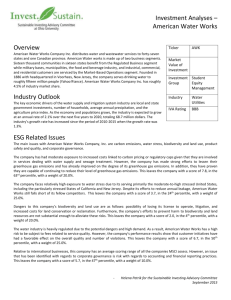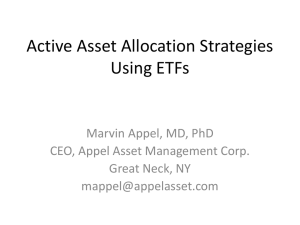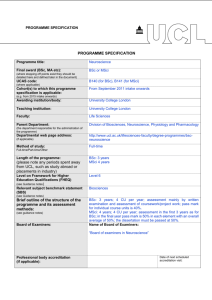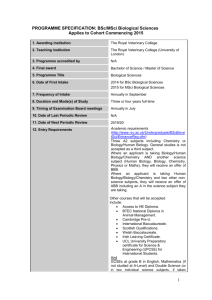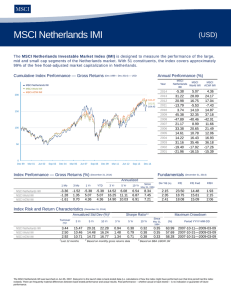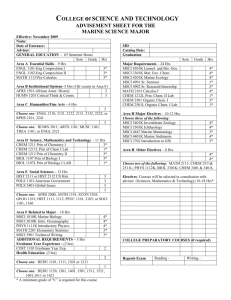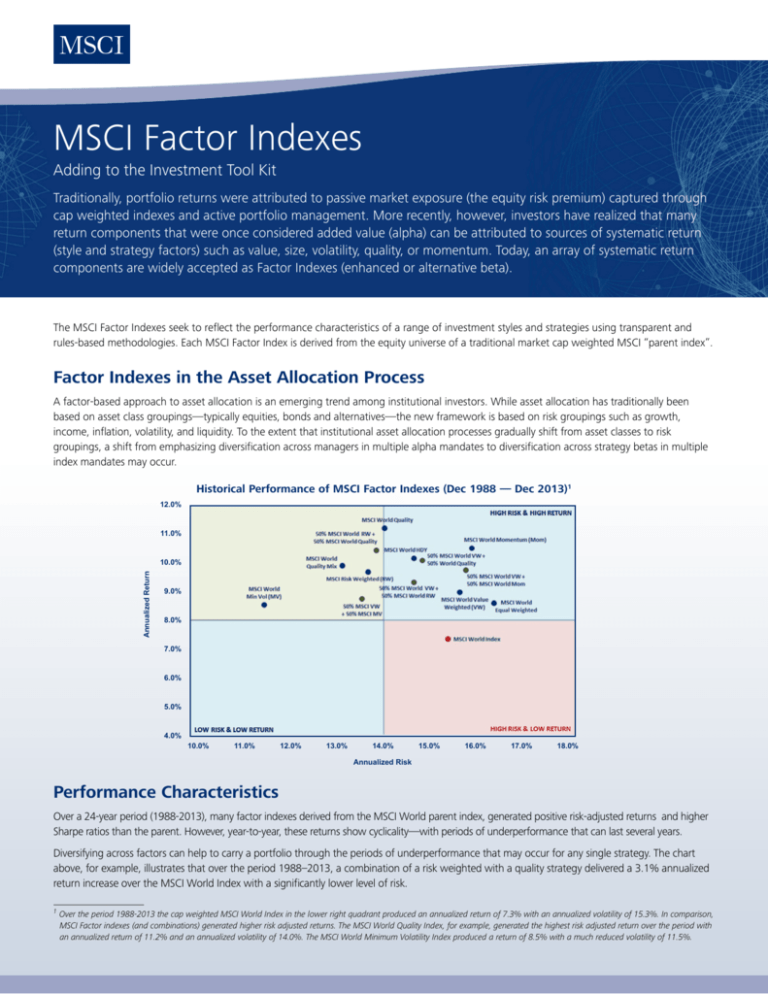
MSCI Factor Indexes
Adding to the Investment Tool Kit
Traditionally, portfolio returns were attributed to passive market exposure (the equity risk premium) captured through
cap weighted indexes and active portfolio management. More recently, however, investors have realized that many
return components that were once considered added value (alpha) can be attributed to sources of systematic return
(style and strategy factors) such as value, size, volatility, quality, or momentum. Today, an array of systematic return
components are widely accepted as Factor Indexes (enhanced or alternative beta).
The MSCI Factor Indexes seek to reflect the performance characteristics of a range of investment styles and strategies using transparent and
rules-based methodologies. Each MSCI Factor Index is derived from the equity universe of a traditional market cap weighted MSCI “parent index”.
Factor Indexes in the Asset Allocation Process
A factor-based approach to asset allocation is an emerging trend among institutional investors. While asset allocation has traditionally been
based on asset class groupings—typically equities, bonds and alternatives—the new framework is based on risk groupings such as growth,
income, inflation, volatility, and liquidity. To the extent that institutional asset allocation processes gradually shift from asset classes to risk
groupings, a shift from emphasizing diversification across managers in multiple alpha mandates to diversification across strategy betas in multiple
index mandates may occur.
Historical Performance of MSCI Factor Indexes (Dec 1988 — Dec 2013)1
12.0%
11.0%
Annualized Return
10.0%
9.0%
8.0%
7.0%
6.0%
5.0%
4.0%
10.0%
11.0%
12.0%
13.0%
14.0%
15.0%
16.0%
17.0%
18.0%
Annualized Risk
Performance Characteristics
Over a 24-year period (1988-2013), many factor indexes derived from the MSCI World parent index, generated positive risk-adjusted returns and higher
Sharpe ratios than the parent. However, year-to-year, these returns show cyclicality—with periods of underperformance that can last several years.
Diversifying across factors can help to carry a portfolio through the periods of underperformance that may occur for any single strategy. The chart
above, for example, illustrates that over the period 1988–2013, a combination of a risk weighted with a quality strategy delivered a 3.1% annualized
return increase over the MSCI World Index with a significantly lower level of risk.
1
Over the period 1988-2013 the cap weighted MSCI World Index in the lower right quadrant produced an annualized return of 7.3% with an annualized volatility of 15.3%. In comparison,
MSCI Factor indexes (and combinations) generated higher risk adjusted returns. The MSCI World Quality Index, for example, generated the highest risk adjusted return over the period with
an annualized return of 11.2% and an annualized volatility of 14.0%. The MSCI World Minimum Volatility Index produced a return of 8.5% with a much reduced volatility of 11.5%.
MSCI Factor Indexes
Highlights of Each Factor Index Series
MSCI Risk Weighted Indexes
MSCI Value Weighted Indexes
•Seek to emphasize stocks with lower historical return variance;
tend to have a bias towards lower size and lower risk stocks
•Have historically exhibited lower realized volatility relative to
the MSCI parent index, while maintaining reasonable liquidity
and capacity
•Seek to overweight stocks with value characteristics and
lower valuations relative to the parent index
•Offer a value tilt, while maintaining trading liquidity,
investment capacity and turnover characteristics similar to
the parent index
Methodology: Each constituent of an MSCI parent index is given a risk
weighting, using the inverse of its historical variance based on three years of
weekly security-level returns data.
Methodology: Each constituent of an MSCI parent index is weighted on four
fundamental accounting variables: sales, earnings, cash earnings and book value.
MSCI Minimum Volatility Indexes
MSCI Equal Weighted Indexes
•Seek to capture the performance characteristics of a minimum
variance strategy by optimizing a cap weighted MSCI parent index
•Have historically shown lower realized volatility and lower beta
relative to the MSCI parent index, with a bias towards smaller, less
volatile stocks and towards stocks with lower idiosyncratic risks
•Seek to remove the influence of market prices from an MSCI
parent index at each quarterly rebalance
•Tend to overweight smaller cap index constituents relative to
the parent index and are considered one approach to capturing
the small cap premium
Methodology: Each MSCI Minimum Volatility Index targets the lowest return
variance for a given covariance matrix of stock returns, applying constraints to
maintain index investability and replicability. Constraints include maximum security
weights, and active country, sector and volatility factor limits versus the parent index.
Methodology: Each index constituent is weighted equally at each rebalance
date, effectively removing the influence of that constituent’s price (high or low)
from the index on the rebalance date.
MSCI GDP Weighted Indexes
MSCI Quality Indexes
•Regional indexes that seek to reflect the size of each country’s
economy (its GDP) rather than the size of its equity market as
represented by the MSCI parent indexes
•Tend to tilt the indexes towards countries with relatively
higher nominal GDP
•Seek to reflect a quality growth investment strategy by targeting
stocks with historically high return on equity (ROE), stable yearover-year earnings growth and low financial leverage
•Capture growth and low leverage factors
Methodology: Each country in an MSCI GDP Weighted Index is weighted
based on the previous year’s GDP data. Country weights are reset annually
in May. Thereafter, the country weights fluctuate with changes in performance
and market capitalization in the parent indexes until the next rebalancing.
Methodology: A quality score is determined for each stock in the MSCI parent
index based on the three fundamental variables shown above. A fixed number of
securities with the highest quality scores are included in each MSCI Quality Index,
covering 30%–40% of the parent index universe. Constituents are weighted by
the product of their quality score and their market cap. Constituent weights for
broad MSCI Quality Indexes are capped at 5%. The indexes are rebalanced semiannually.
MSCI High Dividend Yield Indexes
MSCI Momentum Indexes
•Seek to target companies with high dividend yields and a
record of sustainable and persistent dividend payments
•Capture the performance of high dividend-yielding stocks
while maintaining index turnover characteristics similar to
the parent index
•Seek to reflect the performance of an equity momentum
strategy by emphasizing stocks with high risk-adjusted price
momentum
•Capture the momentum factor, while maintaining reasonably
high capacity and liquidity, with moderate index turnover
Methodology: Each MSCI High Dividend Yield (HDY) Index includes only
the constituents of the parent index that have higher than average dividend
yields, track records of consistent dividend payments, and a capacity to sustain
dividend payouts into the future. In addition, each index excludes potentially
underperforming securities based on “quality” factors such as return on equity
(ROE), earnings variability, debt to equity (D/E), and recent 12 month price
performance. Issuer weights are capped to mitigate concentration risk.1
Methodology: A momentum value is determined for each stock in the MSCI
parent index by combining the stock’s recent 12-month and 6-month local price
performance. This momentum value is then risk-adjusted to determine the stock’s
momentum score. A fixed number of securities with the highest momentum
scores are included in each MSCI Momentum Index, generally covering about
30% of the parent index market cap. Constituents are weighted by the product of
their momentum score and their market cap. Constituent weights for broad MSCI
Momentum Indiexes are capped at 5%. The indexes are rebalanced semi-annually;
in addition, ad hoc rebalancing may occur, triggered by spikes in market volatility.
1
Additional quality screens were implemented as of June, 2013
MSCI Factor Indexes
Highlights of Each Factor Index Series
MSCI Risk Control Indexes
MSCI Barra Factor Indexes (Long-Short and Long-Only)
•Target a specific level of risk by dynamically varying the
weights of an MSCI parent index and a cash component,
subject to a maximum leverage o f 150%
•Provide four different target risk levels: 10%, 12.5%, 15%, and
17.5%
•Optimize an MSCI parent index to capture relatively high
exposure to a target factor (e.g., value, earnings yield,
momentum, low volatility, low leverage) with relatively low
exposure to all other non-target factors
•Aim to achieve similar performance to the parent index plus
the target factor, maintaining index investability and replicability
and minimizing tracking error relative to the parent
•Available in 130/30 long/short and long only versions
Methodology: To estimate the volatility of an MSCI parent index (in a specific base
currency) both its short-term and long term volatility trends are used. Leverage in
the MSCI Risk Control Indexes is subject to a maximum of 150% (plus turnover
buffers) and is calculated daily as the ratio of the specific risk level and the parent
index. The MSCI Risk Control Indexes are rebalanced daily, and are rebalanced only
when the percentage change in daily index leverage exceeds 5% (the turnover buffer).
Two index levels are calculated: total returns representing the weighted return of the
MSCI parent index and the cash component; and, excess returns representing total
returns minus the returns of the cash component.
Methodology: Target factor exposure is set to 1 standard deviation above the
parent index; all non-target factor exposures are limited to ± 0.1 standard deviations
from the parent index. Investability constraints are applied to minimize trading/
shorting costs, limit stock specific risk and maintain low turnover and tracking error
relative to the parent index. The indexes are rebalanced monthly.
MSCI Quality Mix Indexes
MSCI Market Neutral Barra Factor Indexes
•Seek to represent the performance of quality, value and low
volatility multi-factor strategies across global equity markets
•Combine the MSCI Quality, MSCI Value Weighted and MSCI
Minimum Volatility Indexes in one diversified factor index
•Aim to capture systematic returns associated with a single
“target” style factor (e.g., momentum or volatility) while
maintaining minimum exposure to industry, country and other
style factors
•Seek to reflect the performance of a market neutral strategy,
which has historically exhibited low correlation with the
performance of the parent index
Methodology: Each MSCI Quality Mix Index is constructed as a combination of
three MSCI Factor Index components: an MSCI Quality, an MSCI Value Weighted
and an MSCI Minimum Volatility Index. Each of the three component indexes in
an MSCI Quality Mix Index is equally weighted at each semi-annual rebalancing.
All constituents of each component index are included in the MSCI Quality Mix Index.
At any given time, the weight of each security in the MSCI Quality Mix Index is
based on its weight in each underlying component index, and on the weight of
each component index in the MSCI Quality Mix Index.
MSCI Factor Tilt Indexes
•Aim to reflect the performance of specific factors such as
Quality, Momentum and Volatility
•No pre-selection from the parent universe leads to enhanced
investability and high investment capacity
•Designed for institutional investors for whom investability is a critical
consideration, such as large-scale asset owners and managers
Methodology: The indexes are constructed by optimizing an MSCI parent
index to achieve a high, stable level of exposure to a single target factor and
low exposure to all other factors, while remaining investable, replicable and with
moderate index turnover.
Each index is composed of long and short stocks, with gross leverage of 2 (100%
long and 100% short) and aims to achieve a unit standard deviation of exposure to
the target factor. The indexes are rebalanced monthly with several constraints. Nontarget style factor exposures are limited to ±0.1 standard deviation, while industry
and country weights are limited to ±3%. Each index is comprised of a maximum of
300 constituents, with a maximum constituent weight of ±3%. One-way turnover
is limited to 10% (5% for long constituents and 5% for short constituents) at each
rebalancing. There is a shorting cost threshold of 100bps, and trade limits for each
constituent are set using its Average Daily Traded Value.
Methodology: Each MSCI Factor Tilt Index is created by tilting the market
capitalization weights of all the constituents in the parent index based on the relevant
factor score and then re-weighting them.
msci.com | clientservice@msci.com
About MSCI
MSCI Inc. is a leading provider of investment decision support tools to investors globally, including asset managers, banks, hedge funds and pension funds. MSCI products and services
include indexes, portfolio risk and performance analytics, and ESG data and research.
The company’s flagship product offerings are: the MSCI indexes with approximately USD 8 trillion estimated to be benchmarked to them on a worldwide basis1; Barra multi-asset class
factor models, portfolio risk and performance analytics; RiskMetrics multi-asset class market and credit risk analytics; IPD real estate information, indexes and analytics; MSCI ESG
(environmental, social and governance) Research screening, analysis and ratings; and FEA valuation models and risk management software for the energy and commodities markets.
MSCI is headquartered in New York, with research and commercial offices around the world.
The information contained herein (the “Information”) may not be reproduced or redisseminated in whole or in part without prior written permission from MSCI. The Information may not be used to verify or correct other data, to create indexes, risk models, or
analytics, or in connection with issuing, offering, sponsoring, managing or marketing any securities, portfolios, financial products or other investment vehicles. Historical data and analysis should not be taken as an indication or guarantee of any future
performance, analysis, forecast or prediction. None of the Information or MSCI index or other product or service constitutes an offer to buy or sell, or a promotion or recommendation of, any security, financial instrument or product or trading strategy.
Further, none of the Information or any MSCI index is intended to constitute investment advice or a recommendation to make (or refrain from making) any kind of investment decision and may not be relied on as such. The Information is provided “as is”
and the user of the Information assumes the entire risk of any use it may make or permit to be made of the Information. NONE OF MSCI INC. OR ANY OF ITS SUBSIDIARIES OR ITS OR THEIR DIRECT OR INDIRECT SUPPLIERS OR ANY THIRD PARTY INVOLVED IN THE
MAKING OR COMPILING OF THE INFORMATION (EACH, AN “MSCI PARTY”) MAKES ANY WARRANTIES OR REPRESENTATIONS AND, TO THE MAXIMUM EXTENT PERMITTED BY LAW, EACH MSCI PARTY HEREBY EXPRESSLY DISCLAIMS ALL IMPLIEDWARRANTIES,
INCLUDING WARRANTIES OF MERCHANTABILITY AND FITNESS FOR A PARTICULAR PURPOSE. WITHOUT LIMITING ANY OF THE FOREGOING AND TO THE MAXIMUM EXTENT PERMITTED BY LAW, IN NO EVENT SHALL ANY OF THE MSCIPARTIES HAVE ANY
LIABILITY REGARDING ANY OF THE INFORMATION FOR ANY DIRECT, INDIRECT, SPECIAL, PUNITIVE, CONSEQUENTIAL (INCLUDING LOST PROFITS) OR ANY OTHER DAMAGES EVEN IF NOTIFIED OF THE POSSIBILITY OF SUCH DAMAGES. The foregoing shall
not exclude or limit any liability that may not by applicable law be excluded or limited.
1
As of September 30, 2013, as reported on January 31, 2014 by eVestment, Lipper and Bloomberg
June 2014
©2014 MSCI Inc. All rights reserved.

